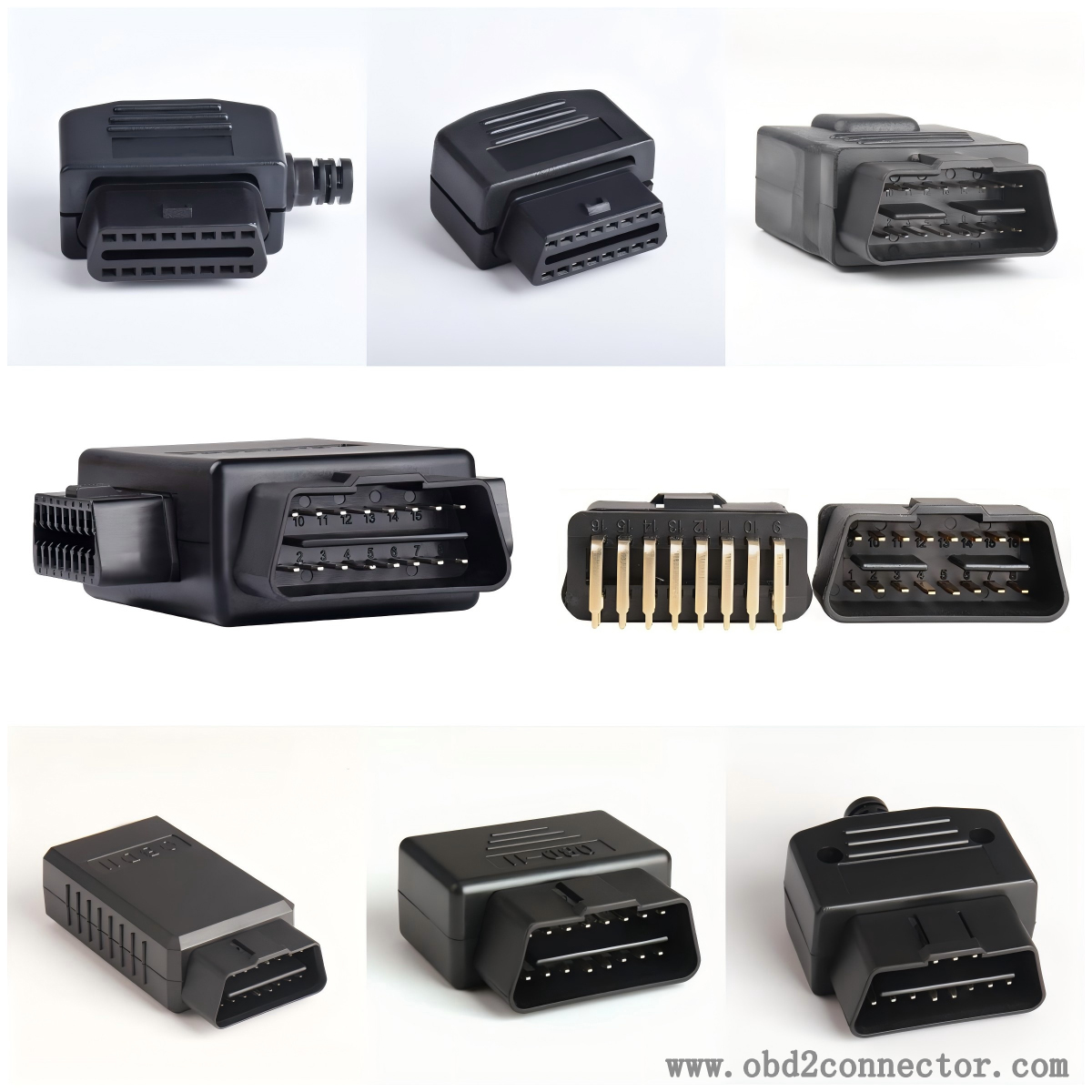What are the types of OBDII elbow connectors?
There are various types of OBDII elbow connectors, and the following are common ones:
Classified by electrical characteristics
Type A: Mainly used for vehicles with 12V power supply systems, usually small vehicles such as sedans. It generally provides+12V power output and has a data transmission rate of about 500000 baud. Its shape is rectangular with a trapezoidal shape, wide at the top and narrow at the bottom.
Type B: Suitable for medium/heavy vehicles with 24V power supply system, such as trucks, buses, etc. Provides+24V power output, with a maximum baud rate of 250000, and has a rectangular shape resembling a square with an interrupt slot in the middle.

Classified by plug type
Male to female elbow connector: One end is a male connector that can be inserted into the vehicle's OBDII interface, and the other end is a female connector used to connect the male plug of diagnostic equipment, achieving the connection between the equipment and the vehicle, such as the OBD male to female elbow automotive diagnostic line.
Male to male elbow connector: Both ends have male connectors, which can be used to connect two devices or interfaces that require male connectors. For example, in some special testing scenarios, it may be used to connect two devices with female connectors.
Female to female elbow connector: With female connectors at both ends, it is generally used for adapter or expansion. It is used when two male devices need to be connected or when the connection distance needs to be extended and both ends require female connectors.
Classified by function and special design
One minute multiple bend connector: such as the L-shaped OBD2 one minute two extension line bend, one OBDII interface can be extended to two, making it convenient to connect multiple diagnostic devices or devices with different functions simultaneously to obtain vehicle data.
Wireless bend connector: an OBDII bend connector that integrates Bluetooth or Wi Fi modules, which connects wirelessly with devices such as mobile phones and tablets to achieve wireless transmission and diagnosis of vehicle data.
Elbow connector with shielding function: using special shielding materials and structures such as braided shielding or aluminum foil shielding, it can effectively reduce electromagnetic interference and external signal interference, ensure the accuracy and stability of data transmission, and is suitable for complex electromagnetic environments.